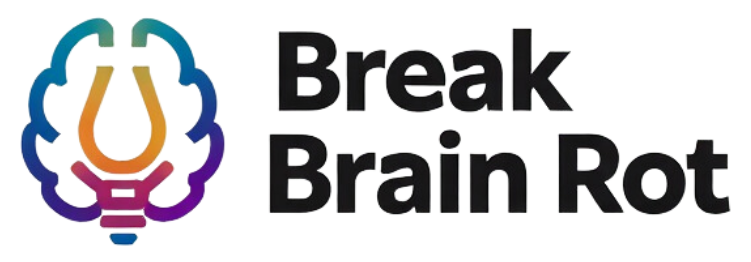In today’s hyper-stimulated world, where endless scrolling, constant notifications, and instant gratification have become the norm, many people are noticing a decline in their ability to focus. This mental overload, often described as “brain rot,” has sparked interest in **dopamine fasting** as a powerful reset. By stepping away from overstimulation, many report experiencing profound **dopamine fasting results**—from sharper concentration to reduced compulsive behaviors. In this guide, we’ll explore how dopamine fasting works, the science behind it, the proven benefits, and how you can implement it safely for lasting mental clarity.
Table of Contents
- What is Dopamine Fasting?
- The Science Behind Dopamine Fasting Results
- Proven Benefits of Dopamine Fasting
- Risks and Misconceptions About Dopamine Fasting
- How to Practice Dopamine Fasting for Best Results
- Long-Term Dopamine Fasting Results and Lifestyle Integration
- FAQs
- Conclusion
What is Dopamine Fasting?
Dopamine fasting is not about eliminating dopamine itself—since that would be impossible and dangerous—but rather about reducing your exposure to overstimulating activities. The practice encourages stepping away from triggers such as social media, processed food, video games, and other instant-reward habits, so your brain can recalibrate.
Definition and Origins
The term was coined in Silicon Valley, where high-performing professionals sought ways to counter digital overstimulation. Instead of constant input, they found value in boredom and stillness to reset their mental clarity.
Popular Misconceptions
A common misunderstanding is that dopamine fasting means shutting off pleasure entirely. In reality, it’s about moderating compulsive behaviors to restore balance. You’re not cutting out dopamine—just limiting unnecessary stimuli.
Psychological vs. Lifestyle Approach
While some adopt dopamine fasting strictly, others take a lifestyle approach. This might mean daily phone-free hours, tech-free Sundays, or replacing scrolling with mindful practices such as mindfulness and focus techniques.

The Science Behind Dopamine Fasting Results
Dopamine is often called the “motivation molecule.” It’s the neurotransmitter responsible for reward, habit formation, and drive. Understanding dopamine’s role helps explain why overstimulation leads to distraction and lack of focus.
Role of Dopamine in the Brain
Dopamine sparks our motivation circuits, rewarding us for survival behaviors like eating or socializing. But in today’s environment, where quick dopamine hits are constantly available, our brains often crave instant gratification. Scientific studies confirm dopamine’s role in habit reinforcement, which explains why overstimulation leads to compulsive behavior.
Neurological Reset or Myth?
While dopamine fasting doesn’t “reset” your receptors directly, avoiding overstimulation helps your brain regain sensitivity to natural rewards. Over time, smaller pleasures (like reading or walking outside) feel more fulfilling again.
Mental Clarity and Focus
People who practice dopamine fasting often report reduced brain fog. Studies suggest that intentional breaks from overstimulation reduce cognitive fatigue, allowing you to perform deeper, focused work sessions afterward.
Proven Benefits of Dopamine Fasting
While experiences vary, many consistently report powerful outcomes from adopting this practice.
Enhanced Focus and Productivity
By cutting short-term distractions, your ability to enter “deep work” states improves. Professionals and students alike report dramatic boosts in concentration. Related read: productivity hacks backed by neuroscience.
Reduction of Addictive Behaviors
Dopamine fasting helps weaken compulsive urges tied to social media, food, or gaming. Slowly, you regain control over habits that previously felt automatic.
Stronger Self-Control and Discipline
When you delay gratification during a fast, you build resilience and discipline—two skills linked to long-term success in career and personal growth.
Risks and Misconceptions About Dopamine Fasting
While the potential is exciting, dopamine fasting is not a magic cure-all. Understanding its limits is crucial.
Not a Quick Fix
If you expect overnight transformation, you’ll likely be disappointed. Sustainable **dopamine fasting results** come from consistency, not a single weekend experiment.
Potential Mental Health Concerns
For individuals struggling with depression or anxiety, harsh restrictions can sometimes worsen symptoms. As Harvard Health notes, balance is key when approaching behavioral interventions.
Striking a Healthy Balance
The best approach is to experiment gently—limit notifications, reduce junk food, integrate reflection practices—without pushing into extreme asceticism.
How to Practice Dopamine Fasting for Best Results
Dopamine fasting can be adjusted to your lifestyle. Here are practical ways to get started.
Steps to Start a Dopamine Fast
- Pick a timeframe (a few hours to a day).
- Turn off social media and minimize tech exposure.
- Avoid processed foods or entertainment binges.
Daily Habits That Complement a Fast
Adding constructive habits during fasts enhances results. Meditation, reading, journaling, and meditation benefits for focus help reinforce new pathways.
Practical Examples
Some professionals fast by going “screen-free” every Saturday. Students may avoid social media during exams. Executives use it to create deep work blocks for strategic tasks.
Long-Term Dopamine Fasting Results and Lifestyle Integration
For those who stick with it, dopamine fasting becomes more than a hack—it’s a lifestyle shift.
Sustainable Improvements in Focus and Clarity
With time, dopamine fasting rewires how you interact with distractions, making deep focus more natural while reducing mental clutter.
Integration with Wellness Practices
The most powerful results occur when dopamine fasting is combined with complementary habits like exercise, mindfulness, and proper sleep cycles.
The Future of Dopamine Fasting
Wellness communities predict dopamine fasting will grow, merging with broader practices like digital detox and attention training. See more insights in Psychology Today on lifestyle practices.
Frequently Asked Questions
Do dopamine fasting results actually improve focus long-term?
Yes, many people report that consistent practice improves their sustained attention, particularly when combined with good sleep and mindfulness habits.
Is dopamine fasting safe for everyone?
It’s generally safe if practiced moderately. However, those struggling with mental health should consult a professional before making drastic changes.
How long should a dopamine fast last to see results?
Even a few hours of tech-free presence can provide noticeable benefits. Beginners often start with half-day fasts before extending them.
What are the most common dopamine fasting mistakes?
Expecting instant change, going too extreme, and not integrating supportive habits are the biggest pitfalls.
How is dopamine fasting different from a digital detox?
A digital detox usually focuses only on screens, while dopamine fasting covers all overstimulating behaviors, including food, gambling, or compulsive shopping.
Conclusion
In a world of endless distractions, the promise of **dopamine fasting results** is both refreshing and powerful. By stepping back from instant-reward behaviors, you give your brain the reset it needs—improving focus, reducing brain fog, and reclaiming control over your habits. But remember, dopamine fasting works best when applied consistently and in balance. Rather than searching for a quick miracle, treat it as a practical tool in your personal growth toolkit. Start small—set aside a few hours this week, track how you feel, and gradually expand. Your brain will thank you for the clarity and renewed focus.
Ready to try it? Begin with one simple dopamine fast this week and notice the shift in your mental energy. Then, build it into your routine for lasting results.

